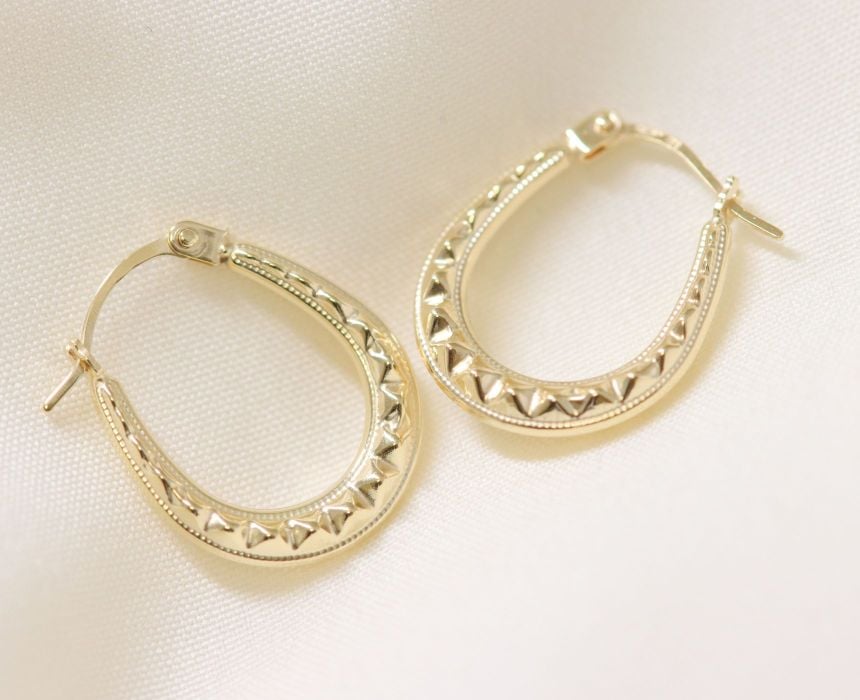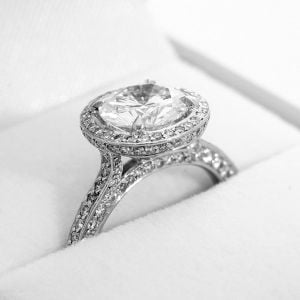- ‹Home
- ‹
- /
- Jewellery & Watch Guides
- /
- The Rolex Submariner Guide

Quite simply one of the most famous watches ever produced. The Rolex Submariner has transcended the watchmaking world to become a cultural icon of its own
accord. Arguably the most recognisable and most iconic sports watch ever made, the Rolex Submariner is often imitated but never bettered. But why does the reputation of this watch precede it? This guide will help you understand what owning a Rolex Submariner means and the features that make it so special.
Submariners
Submariners

Brief History of the Rolex Submariner
Launched in 1953, although not released to the public until 1954, the Rolex Submariner was the first wristwatch to be waterproof to 100m (330 feet). The Submariner stood on the shoulder of giants as it followed the ground-breaking Rolex Oyster, the world's first waterproof wristwatch in 1926. Since its inception in 1953, it has continued to set the bar for not only diving watches, but sports watches more generally.A Watch With Diving Heritage
Throughout the 20th century, exploration reached its zenith. New technologies meant man could now reasonably attempt to go wherever he or she set their sights. Wherever man went, a Rolex would be on their wrist as a symbol of both excellence and achievement. The best required the best watches and therefore bought Rolexes, but equally, Rolex needed the best to promote their watches.
In the 1950s, scuba diving became an increasingly popular hobby. The invention of the aqua-lung, the first self-contained underwater breathing apparatus i.e., scuba, in the 1940s by two Frenchmen Emile Cagnan and Jacques Cousteau revolutionised recreational diving, opening it up to the masses. Very conveniently, Jacques Cousteau was a close friend of the Public Relations Director of Rolex, Rene-Paul Jeanneret, himself a passionate diver.
Jeanneret recognised the power of a watch to be more than just a time-telling device. Instead, he became the internal instigator of Rolex's push into the tool watch market – a tool watch being a watch that serves a purpose beyond just the time. A watch could, therefore, be tailored to different functionalities and for the Submariner, this was diving.
With Jeanneret's internal drive and passion, Cousteau's diving expertise and the dedication of Rolex's in-house watchmakers, the very first Submariner, the 6204, was born.
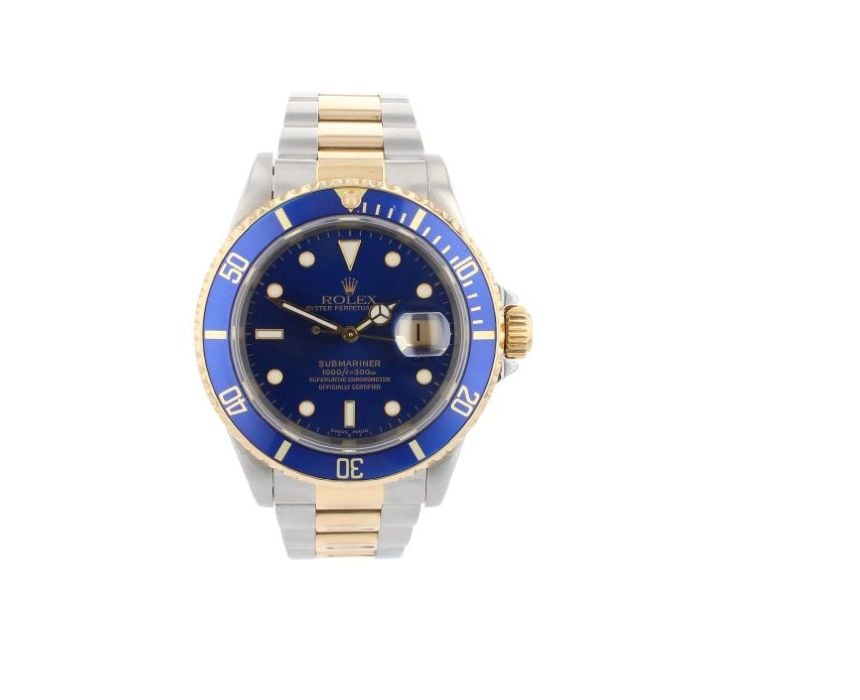
The First Submariner: Designed For The Deep
Whilst Rolex already had a reputation for producing high-quality watches, the creation of the world's first waterproof wristwatch in 1926 ensured a reputation for accurate timekeeping even in the most treacherous of conditions. Such a reputation and legacy weren't lost on the first Submariner – Reference 6204. It was a product of decades of iterative technological enhancement.
A common misconception about the ref. 6204 Submariner, is that it was the first-ever diving watch. However, Omega had already produced the Marine 21 years earlier and the Blancpain Fifty Fathoms, the first modern dive watch, was produced just months before the Submariner. However, the Submariner was the first wristwatch to be waterproof to 100m. The Blancpain Fifty Fathoms, fathom being an old English measure of depth equivalent to six feet or 1.8m, meant it was only waterproof to 90m. A fact that was not lost on Rolex's marketing department.
Building only the earliest diving watch designs, the ref. 6204 Submariner featured an easily readable, high-contrast black dial with white hands, numbers and second markers. The dial of the ref. 6204 features the same mix of batons for batons for quarter times, dots for regular hours and the upside-down triangle for 12 as current models. A design that has stood the test of time, it is now instantly recognisable as Submariner.
Whilst Rolex already had a reputation for producing high-quality watches, the creation of the world's first waterproof wristwatch in 1926 ensured a reputation for accurate timekeeping even in the most treacherous of conditions. Such a reputation and legacy weren't lost on the first Submariner – Reference 6204. It was a product of decades of iterative technological enhancement.
A common misconception about the ref. 6204 Submariner, is that it was the first-ever diving watch. However, Omega had already produced the Marine 21 years earlier and the Blancpain Fifty Fathoms, the first modern dive watch, was produced just months before the Submariner. However, the Submariner was the first wristwatch to be waterproof to 100m. The Blancpain Fifty Fathoms, fathom being an old English measure of depth equivalent to six feet or 1.8m, meant it was only waterproof to 90m. A fact that was not lost on Rolex's marketing department.
Building only the earliest diving watch designs, the ref. 6204 Submariner featured an easily readable, high-contrast black dial with white hands, numbers and second markers. The dial of the ref. 6204 features the same mix of batons for batons for quarter times, dots for regular hours and the upside-down triangle for 12 as current models. A design that has stood the test of time, it is now instantly recognisable as Submariner.

The hands of the ref. 6204 were pencil-like and didn't feature the now ever-present Mercedes hands featured on most Rolex sports models. However, both the hour markers and hands were luminous and hence were readable at depths where sunlight faded thanks to a radium glowing solution. Radium, however, is radioactive and by the seventies was replaced by safer tritium solutions.
The rotating bezel, so divers could accurately time track their dives and decompression times, was marked for an hour in 10-minute intervals. Future editions featured markers for every minute on the bezel up to 15 minutes for divers to more precisely time shorter durations. The Submariner also featured the Perpetual Oyster's automatic movements to reduce reliance on the crown, the weakest point in the waterproofness of a case.
One unavoidable feature of the original ref. 6204 Submariner was that the bezel could rotate in either direction, both clockwise and anticlockwise. Indeed, it was Blancpain that held the patent for the one-way bezel. Given it could only turn anticlockwise, it helped to prevent the bezel from being accidentally knocked and reduce the potential for immersion time or decompression time errors. As it could only go anticlockwise, if knocked, it would only overestimate, not underestimate the time, and with the necessity of decompression stops to prevent the life-threatening sicknesses known as the "bends", erring on the side of caution is not a bad thing. However, Blancpain's patent for the one-way bezel ultimately elapsed, with Rolex Submariners receiving a unidirectional bezel in 1981 with the ref. 16800 and 16618.
The rotating bezel, so divers could accurately time track their dives and decompression times, was marked for an hour in 10-minute intervals. Future editions featured markers for every minute on the bezel up to 15 minutes for divers to more precisely time shorter durations. The Submariner also featured the Perpetual Oyster's automatic movements to reduce reliance on the crown, the weakest point in the waterproofness of a case.
One unavoidable feature of the original ref. 6204 Submariner was that the bezel could rotate in either direction, both clockwise and anticlockwise. Indeed, it was Blancpain that held the patent for the one-way bezel. Given it could only turn anticlockwise, it helped to prevent the bezel from being accidentally knocked and reduce the potential for immersion time or decompression time errors. As it could only go anticlockwise, if knocked, it would only overestimate, not underestimate the time, and with the necessity of decompression stops to prevent the life-threatening sicknesses known as the "bends", erring on the side of caution is not a bad thing. However, Blancpain's patent for the one-way bezel ultimately elapsed, with Rolex Submariners receiving a unidirectional bezel in 1981 with the ref. 16800 and 16618.
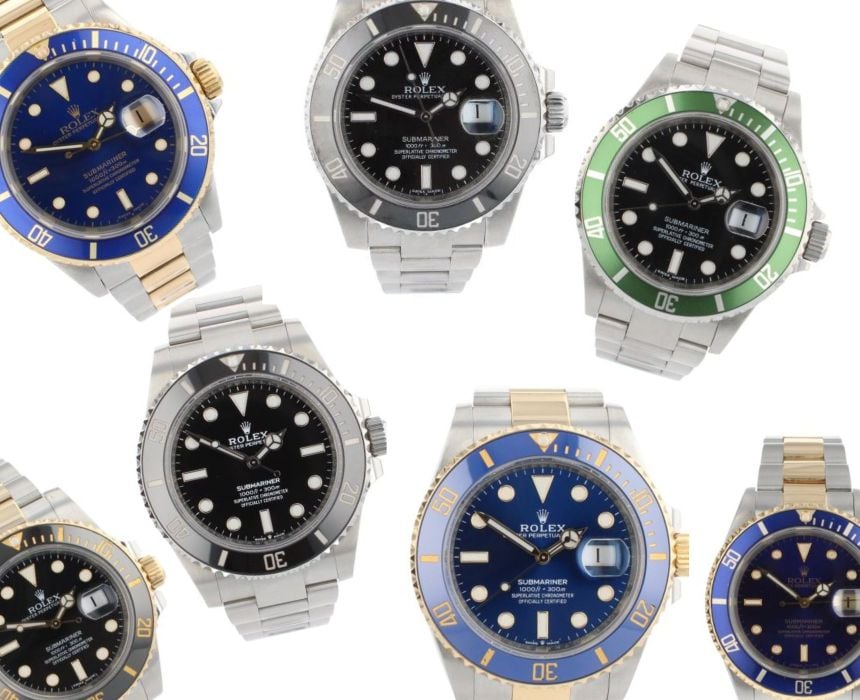
The Submariner uses the same case as the original Oyster, albeit with some internal improvements, the world's first waterproof watch. In September of 1953, they showed the world the true potential of their diving watches as Auguste Piccard dove 3150 metres in a deep-sea submarine with a purposefully created Rolex Deep Sea Special affixed to the hull of the bathyscaphe. Despite the intense pressure, the watch featuring an Oyster case remained unscathed.
Seven years later, Auguste's son, Jacques Piccard along with Dan Walsh, descended to the deepest point on Earth, Challenger Deep found within the Mariana Trench. Once again, the outside of the sub was attached a special Rolex featuring an Oyster case designed to withstand the ton per square centimetre pressure exerted at 11,000 metres. Just as it had in 1953, the Rolex was as accurate at the jet-black depths as it was on the surface.
Such publicity stunts cemented Rolex's sports watches as reliable, go-anywhere timepieces that were synonymous with human achievement. However, Rolex wasn't about to leave anything to chance. Before the Submariner reached the wrists of the public, it had undergone thorough deep-sea testing. Indeed, the Institute of Deep Sea Research based in Cannes said of the Submariner in a report published in 1953 that despite the high salinity of the Mediterranean there was no evidence of corrosion. Nor was there any sign of water penetration unlike other water-resistant watches from top brands even when it was dropped to a depth of 120 metres.
Seven years later, Auguste's son, Jacques Piccard along with Dan Walsh, descended to the deepest point on Earth, Challenger Deep found within the Mariana Trench. Once again, the outside of the sub was attached a special Rolex featuring an Oyster case designed to withstand the ton per square centimetre pressure exerted at 11,000 metres. Just as it had in 1953, the Rolex was as accurate at the jet-black depths as it was on the surface.
Such publicity stunts cemented Rolex's sports watches as reliable, go-anywhere timepieces that were synonymous with human achievement. However, Rolex wasn't about to leave anything to chance. Before the Submariner reached the wrists of the public, it had undergone thorough deep-sea testing. Indeed, the Institute of Deep Sea Research based in Cannes said of the Submariner in a report published in 1953 that despite the high salinity of the Mediterranean there was no evidence of corrosion. Nor was there any sign of water penetration unlike other water-resistant watches from top brands even when it was dropped to a depth of 120 metres.
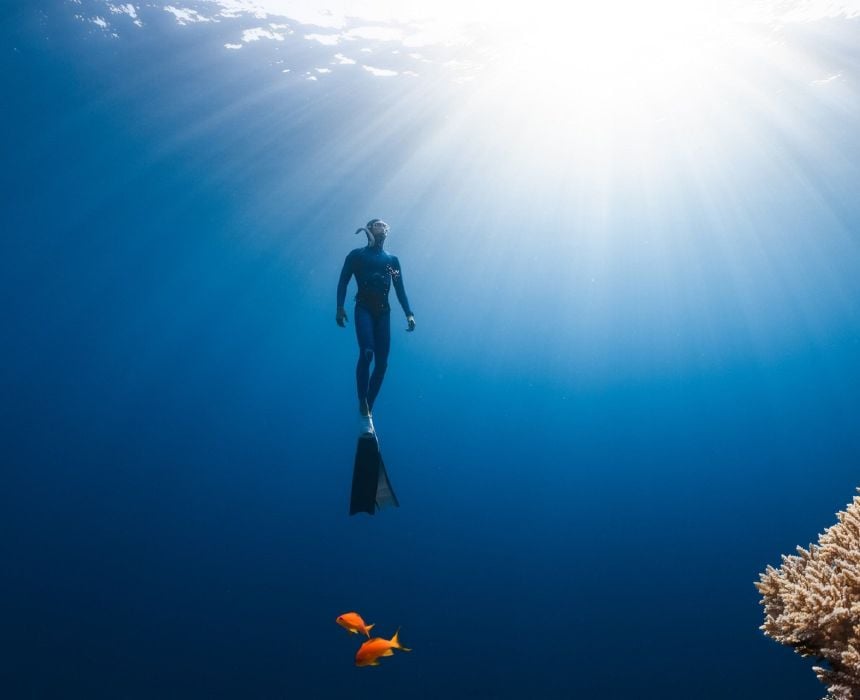
Tested In-depth
The Submariner uses the same case as the original Oyster, albeit with some internal improvements, the world's first waterproof watch. In September of 1953, they showed the world the true potential of their diving watches as Auguste Piccard dove 3150 metres in a deep-sea submarine with a purposefully created Rolex Deep Sea Special affixed to the hull of the bathyscaphe. Despite the intense pressure, the watch featuring an Oyster case remained unscathed.Seven years later, Auguste's son, Jacques Piccard along with Dan Walsh, descended to the deepest point on Earth, Challenger Deep found within the Mariana Trench. Once again, the outside of the sub was attached a special Rolex featuring an Oyster case designed to withstand the ton per square centimetre pressure exerted at 11,000 metres. Just as it had in 1953, the Rolex was as accurate at the jet-black depths as it was on the surface.
Such publicity stunts cemented Rolex's sports watches as reliable, go-anywhere timepieces that were synonymous with human achievement. However, Rolex wasn't about to leave anything to chance. Before the Submariner reached the wrists of the public, it had undergone thorough deep-sea testing. Indeed, the Institute of Deep Sea Research based in Cannes said of the Submariner in a report published in 1953 that despite the high salinity of the Mediterranean there was no evidence of corrosion. Nor was there any sign of water penetration unlike other water-resistant watches from top brands even when it was dropped to a depth of 120 metres.
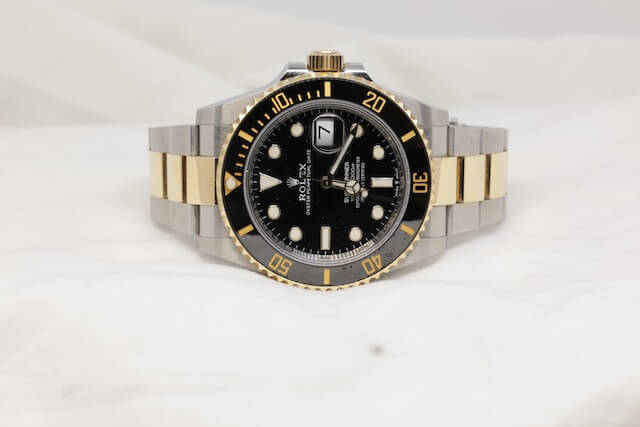
Evolution, Never Revolution
The appearance of the Rolex Submariner has changed little in its seven-decade history. Showing the benefits of getting things right first time, the iconic contrasting dial, batons at the 3, 6 and 9-hour marks with dots for the remaining hours, the inverse triangle at 12 and the pearl-set bezel have become almost as recognisable as the name Submariner itself.Revolution is never a word that Rolex would associate itself with, but instead, the Rolex Submariner has seen continual iterative changes. After all, if you had produced a product as immediately successful as the Submariner, you would simply fine-tune it and update it with the technology of the day rather than replacing the recipe that had brought you so much success.
The first Submariner – the ref. 6204 – is considered so as it was the first to feature the name Submariner on the dial, although, some 6204s featured the name "Sub-Aqua" produced exclusively for Britain. Below the Rolex branding, the spacing of "Oyster Perpetual" was greater than future models, known as "split logo" dials. The hands were also simple, pencil-shaped hands rather than the now quintessential Mercedes hands so-called as the hour hand features a 3-pointed star. Moreover, the bezel of the ref. 6204 features no hashings for the first 15-minutes which would later become standard.
The 1950s saw no less than eight Submariner references produced. The ref. 6205, released pretty much simultaneously with the 6204 featured a slightly thicker case for a more rugged appeal and increased the size of the crown by 0.7mm to 6mm to be easier to operate. Yet Rolex removed the Submariner text on the ref. 6205 Series 1. It, therefore, earned the nickname "clean dial" Sub. A second series of the 6205 was released in the same year, 1954, the first to feature the Mercedes-style hands which are now standard on all Rolex sports watches and returned the Submariner text above the six o'clock.
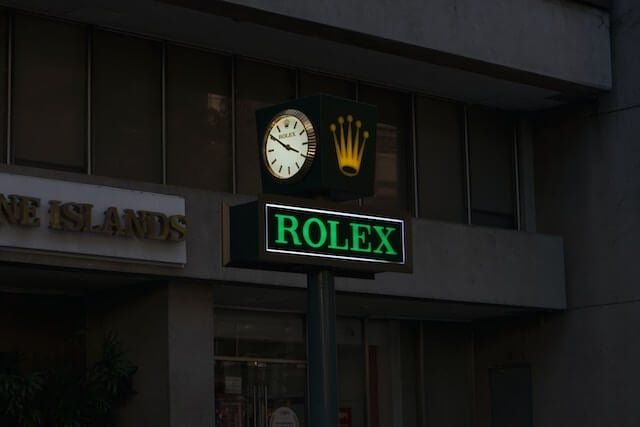
The ref. 6200, produced a year later (yes, the lack of chronological ordering here is confusing) featured the Explorer-style dial – a dial which replaced the baton markers for 3, 6 and 9 with Arabic numerals – first adopted on the Rolex Explorer, and featured an 8mm crown, the first of the so-called 'Big Crown' submariners. The crown is also the first Submariner to feature the Brevet, a small cross marking underneath the Rolex symbol, and the first Submariner to be waterproof to 200m. Once again, the ref. 6200 had both Series 1 and Series 2 variation and once again, the former went without the Submariner text whilst the latter retained it and featured a larger Rolex logo.
The continuous tinkering of Rolex in the 1950s doesn't stop there, however. The ref. 6536 featured the same thinner case as the ref. 6205 meaning its waterproofness was back to only 100m. The first version of the ref. 6536 featured the first 'depth rating' on the dial of a Submariner as it was the first to have a 'four-line' dial. 'ROLEX' on the first line, 'OYSTER PERPETUAL' on the second, '100/330' (the depth rating) on the third and 'Submariner' on the fourth. The depth rating would go on to be a mainstay of the model, transposing itself onto later Sea-Dweller models. The second version of the ref. 6536 introduced the famous red upside-down triangle, complete with pearl, to the bezel as opposed to the standard silver triangle. The third variation of the ref. 6536 featured hash markings on the bezel between 0-15 minutes for more precise timing measurements – the first Rolex to feature them - as opposed to the first and second variations which went without the hashes.
The formative years of the Submariner saw a string of experimentation and modification both internal and external. However, in 1959 the release of the ninth reference – the ref. 5512 – saw the dominant Submariner design established. Ever since Rolex Submariner has taken its design cues from the ref. 5512. Its case had grown to 40mm, up from 37mm and 38mm on previous editions, the hands were Mercedes-style, the bezel featured hashings and, most significantly, the crown was now guarded. So successful was this design that it remained more or less untouched until 2008 with the arrival of the Super Case.
The continuous tinkering of Rolex in the 1950s doesn't stop there, however. The ref. 6536 featured the same thinner case as the ref. 6205 meaning its waterproofness was back to only 100m. The first version of the ref. 6536 featured the first 'depth rating' on the dial of a Submariner as it was the first to have a 'four-line' dial. 'ROLEX' on the first line, 'OYSTER PERPETUAL' on the second, '100/330' (the depth rating) on the third and 'Submariner' on the fourth. The depth rating would go on to be a mainstay of the model, transposing itself onto later Sea-Dweller models. The second version of the ref. 6536 introduced the famous red upside-down triangle, complete with pearl, to the bezel as opposed to the standard silver triangle. The third variation of the ref. 6536 featured hash markings on the bezel between 0-15 minutes for more precise timing measurements – the first Rolex to feature them - as opposed to the first and second variations which went without the hashes.
The formative years of the Submariner saw a string of experimentation and modification both internal and external. However, in 1959 the release of the ninth reference – the ref. 5512 – saw the dominant Submariner design established. Ever since Rolex Submariner has taken its design cues from the ref. 5512. Its case had grown to 40mm, up from 37mm and 38mm on previous editions, the hands were Mercedes-style, the bezel featured hashings and, most significantly, the crown was now guarded. So successful was this design that it remained more or less untouched until 2008 with the arrival of the Super Case.
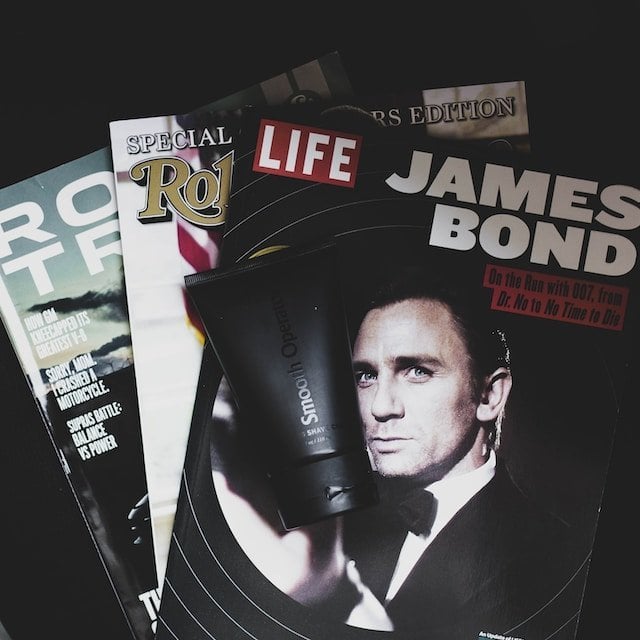
James Bond: I Prefer The Ref. 6538 Myself
The ref. 6200, produced a year later (yes, the lack of chronological ordering here is confusing) featured the Explorer-style dial – a dial which replaced the baton markers for 3, 6 and 9 with Arabic numerals – first adopted on the Rolex Explorer, and featured an 8mm crown, the first of the so-called 'Big Crown' submariners. The crown is also the first Submariner to feature the Brevet, a small cross marking underneath the Rolex symbol, and the first Submariner to be waterproof to 200m. Once again, the ref. 6200 had both Series 1 and Series 2 variation and once again, the former went without the Submariner text whilst the latter retained it and featured a larger Rolex logo.The continuous tinkering of Rolex in the 1950s doesn't stop there, however. The ref. 6536 featured the same thinner case as the ref. 6205 meaning its waterproofness was back to only 100m. The first version of the ref. 6536 featured the first 'depth rating' on the dial of a Submariner as it was the first to have a 'four-line' dial. 'ROLEX' on the first line, 'OYSTER PERPETUAL' on the second, '100/330' (the depth rating) on the third and 'Submariner' on the fourth. The depth rating would go on to be a mainstay of the model, transposing itself onto later Sea-Dweller models. The second version of the ref. 6536 introduced the famous red upside-down triangle, complete with pearl, to the bezel as opposed to the standard silver triangle. The third variation of the ref. 6536 featured hash markings on the bezel between 0-15 minutes for more precise timing measurements – the first Rolex to feature them - as opposed to the first and second variations which went without the hashes.
The formative years of the Submariner saw a string of experimentation and modification both internal and external. However, in 1959 the release of the ninth reference – the ref. 5512 – saw the dominant Submariner design established. Ever since Rolex Submariner has taken its design cues from the ref. 5512. Its case had grown to 40mm, up from 37mm and 38mm on previous editions, the hands were Mercedes-style, the bezel featured hashings and, most significantly, the crown was now guarded. So successful was this design that it remained more or less untouched until 2008 with the arrival of the Super Case.

Rolex Submariner Date
In 1969, man had made it to the moon and The Beatles recorded Abbey Road, but the world of watches was rocked by one introduction, the ref. 1680. The ref. 1680 was essentially identical to the 5512 in all but one feature, the addition of the date function. A minor change perhaps to those without a horological disposition, the addition of the date function along with the "Cyclops Lens" to magnify the date, split opinion.For the idealists, this was an overt move away from the original conception of the watch as a diving tool into a leisure watch. However, the realists had come to appreciate that the Submariner was not exclusively used for diving, and instead was worn daily.
The shift from tool to status watch was affirmed by Rolex as the Submariner Date models are the only Submariners to be released in gold and gold alloys with the dial face also made available in a variety of colours. Non-date submariners have only ever been available in steel with only black dials.
Rolex has, therefore, appeased both sides. Whilst the introduction of the Submariner Date faced critique initially, the standardisation of the Submariner based on the ref. 5512 perfectly caters to those who see the Submariner as a diving tool watch. As for the Submariner Date, its perception as a status symbol, even if some models are too loud for some, has undoubtedly helped to elevate the Submariner model into a brand in its own right.
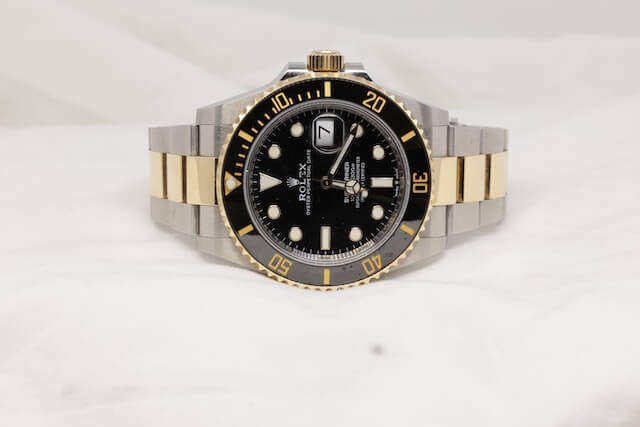
Modern Rolex Submariners
Given the extensive history of the Rolex Submariner, 'modern' Rolex Submariners is a rather misleading term given its application to any Submariner post c.1980. The period between the introduction of the Submariner Date in 1969 was relatively quiet in terms of development. After all, Rolex had found a winning formula with the ref. 5512 and made mainly technical improvements with only some minor outside alterations.In 1979 with the ref. 16800, Rolex replaced the acrylic style crystal (the glass covering the face of the watch) with tougher and scratch-resistant sapphire crystal. It was also the first Submariner to be waterproof to 300m, a standard that is now upheld by all Submariners to this day. Crucially, however, it was the first Rolex to feature the all-important unidirectional bezel which had eluded Rolex since Blancpain's patent. The ref. 16800 was crucial for the Submariner brand, bringing it in line with modern expectations.
In 1983, the ref. 16613 was the first Submariner to become available in 'Rolesor' – Rolex's trademark two-tone bracelet consisting of Oystersteel outer links and 18-carat gold (either yellow, white or Everose) inner links.
Jumping forward to 2003 and Rolex celebrate the Submariner's 50th anniversary with the 16610LV – a Rolex Submariner Date nicknamed 'Kermit'. When you see a picture, you'll quickly see why. It was the first Rolex to feature a Rolex green bezel, LV standing for Lunette Verte (green bezel in French) a now iconic and synonymous colour with the brand. Whilst most people believe that the bezel was the only distinguishing feature of the 16610LV, however, it was also the first Submariner to feature the new Maxi Dial, first seen on the Yacht-Master in 1991. Essentially, it features larger markers and hands for improved legibility.
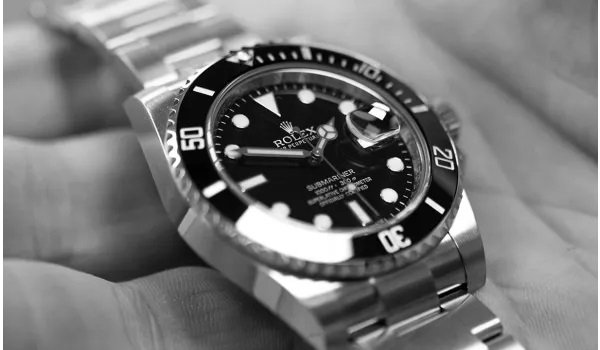
The biggest evolution in Submariner history since the introduction of the Submariner Date came in 2008 with the introduction of the Cerachrom bezel and 'Super Case' to three new Rolex Submariner references – ref.1166xx. The Cerachrom, a patented ceramic impervious to scratches and UV discolouration, bezel had recently featured on the 50th anniversary of the GMT-Master II. The Super Case featured thicker lungs and crown guards giving the impression of a far bigger watch whilst still being wearable and comfortable. The Maxi Dial from the Kermit was also featured on the 2008 references.
The introduction of the Super Case was not universally popular, however. Some thought its enhanced proportions made it look bulky whilst others were fans of Rolex's approach to the 'big watch' trend. To appease both sides, in 2020 Rolex finally pushed passed the 40mm limit that previously all Submariners had been below, to 41mm. With this, the bulkier elements of the watch had been softened. The 2020 ref. 126xx models also feature an upgraded calibre with the cal. 3135, having powered the Submariner Date for the previous 30 years, set for retirement with the cal. 3235 its replacement having replaced around 90% of the components.
Future Rolex Submariners
The sheer history behind the Rolex Submariner has cemented its popularity in the annuls of, ironically, time. 2023 marks the 70th Anniversary of the Rolex Submariner with some speculation as to whether Rolex will release anniversary models and if so, what they may look like or introduce. Whilst Rolex always has a reputation for orthodoxy, you never know what Rolex may have up its sleeve for this iconic model as demonstrated with the Kermit. Here's to the next 70 years of the Rolex Submariner.
The introduction of the Super Case was not universally popular, however. Some thought its enhanced proportions made it look bulky whilst others were fans of Rolex's approach to the 'big watch' trend. To appease both sides, in 2020 Rolex finally pushed passed the 40mm limit that previously all Submariners had been below, to 41mm. With this, the bulkier elements of the watch had been softened. The 2020 ref. 126xx models also feature an upgraded calibre with the cal. 3135, having powered the Submariner Date for the previous 30 years, set for retirement with the cal. 3235 its replacement having replaced around 90% of the components.
Future Rolex Submariners
The sheer history behind the Rolex Submariner has cemented its popularity in the annuls of, ironically, time. 2023 marks the 70th Anniversary of the Rolex Submariner with some speculation as to whether Rolex will release anniversary models and if so, what they may look like or introduce. Whilst Rolex always has a reputation for orthodoxy, you never know what Rolex may have up its sleeve for this iconic model as demonstrated with the Kermit. Here's to the next 70 years of the Rolex Submariner.
RAMSDENS SUBMARINERS






